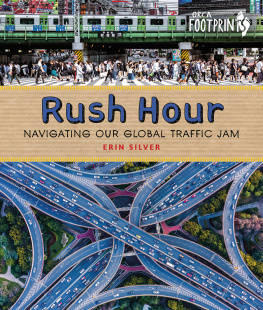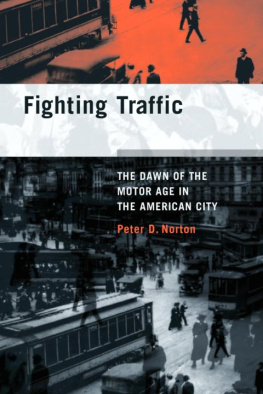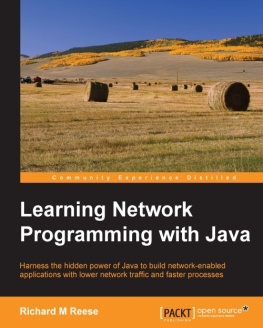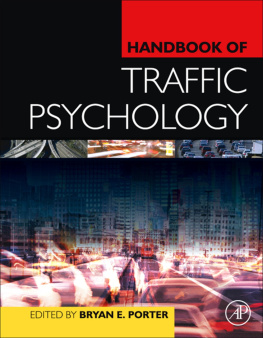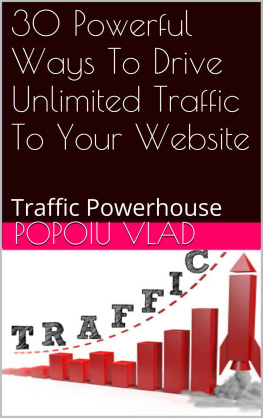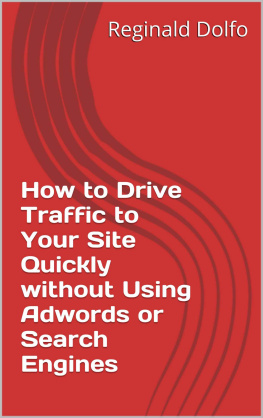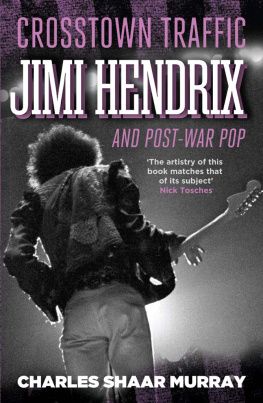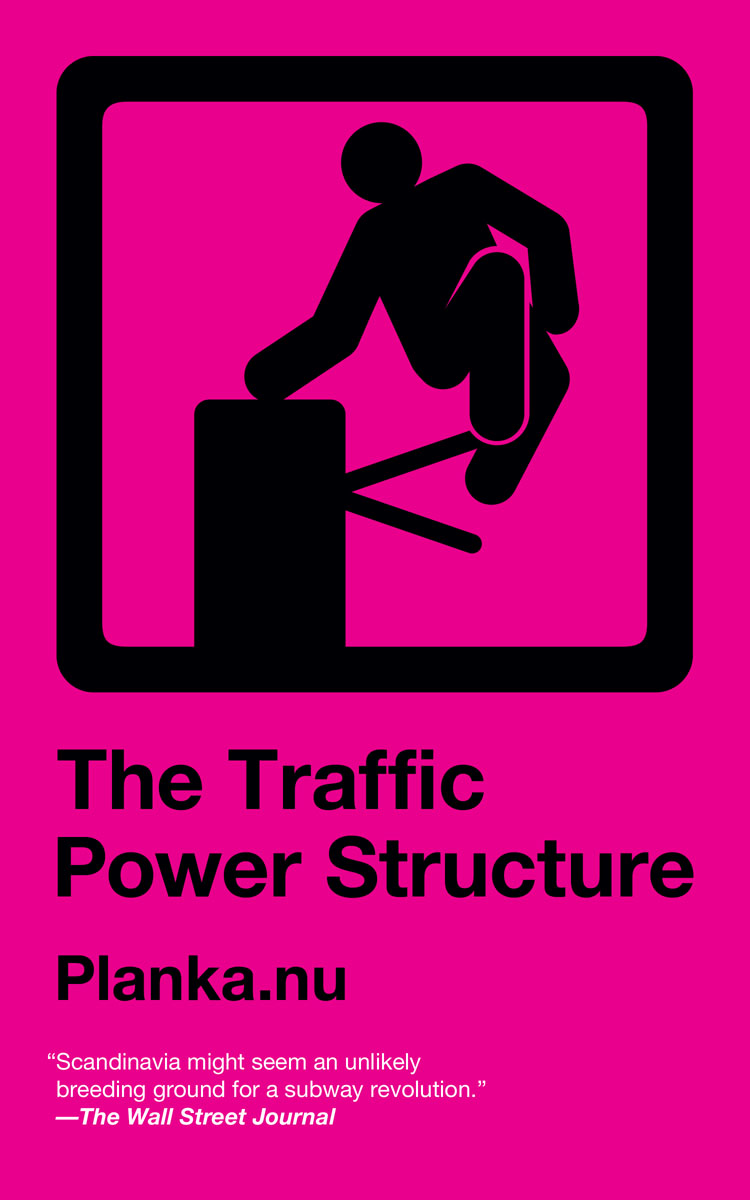
Praise for The Traffic Power Structure and Planka.nu
The groups efficiency in evasion has created an enviable business model.
Matt Flegenheimer, New York Times
We could build a Berlin Wall around the metro stations, and they would still try to find ways to get around it.
Jesper Pettersson, spokesperson for Stockholms Public Transport Services
Not a sentence without a message, not a word in the wrong place.
Lars Wilderng, Cornucopia
Well written, well informed, and well conceived.
Swedish Arts Council
Scandinavia might seem an unlikely breeding ground for a subway revolution.
Wall Street Journal
The Traffic Power Structure
Planka.nu

This work is licensed under the Creative Commons Attribution-NonCommercial-ShareAlike 4.0 International License. To view a copy of this license, visit http://creativecommons.org/licenses/by-nc-sa/4.0/ or send a letter to Creative Commons, PO Box 1866, Mountain View, CA 94042, USA.
ISBN: 978-1-62963-1-530
Library of Congress Control Number: 2016930968
Cover by John Yates/Stealworks
Layout by Jonathan Rowland
Translated by Gabriel Kuhn
Illustrations by Felix Hetscher (with thanks to UNRAST-Verlag, www.unrast-verlag.de)
10 9 8 7 6 5 4 3 2 1
PM Press
PO Box 23912
Oakland, CA 94623
www.pmpress.org
Printed in the USA by the Employee Owners of Thomson-Shore in Dexter, Michigan. www.thomsonshore.com
Contents
The Traffic Power Structure

Youre not born a motorist, you become one.
Mobility and class are tightly linked. Not only because mobility depends on economic resources but also because a society based on the current mobility paradigmwhat we call auto-mobilitycontributes directly to the increase of economic and social injustice.
It is self-evident that a society prioritizing automobile traffic benefits motorists. It is also true that affluent white men are overrepresented among motorists. A society that prioritizes automobile traffic and sees mobility as a magical recipe for progress sharpens the contradictions between individuals and social groups.
The traffic power structure establishes a hierarchy among different means of transport. The automobile comes out on top. At the bottom we find pedestrians, bicyclists, and public transport. The resources allocated to different means of transport reflect this hierarchy. The superiority of the automobile is the result of a society guided by the principle of automobility, that is, a society in which the automobile gets to define our existence.
This book was written to shed light on the traffic power structure and its consequences. A society based on automobility is not only ecologically unsustainable but also leads to economic and social segregation. Investigating current transport policies while outlining different ones can, in our opinion, contribute to solutions for many social problems.
Automobile traffic turns us into competitors. Who has never felt turning into a bona fide motorist once he or she sits down behind the wheel? Driving a car seems to lead to egotistical behavior almost inevitably. Everyone tries to win at the cost of others. Our fellow human beingsother drivers, cyclists, pedestrians, and the passengers in public transportturn into obstacles. Lets be honest: who has never personally felt the aggressiveness and the competitive egoism caused by the automobile? Since we dont want to encourage such behavior and are convinced that youre not born a motorist but become one, our aim is to end this particular chapter of human evolution. This requires not only changing the traffic power structure and removing the automobile from its pedestal but also building a society that is based on other principles: a society where no one is forced to participate in the traffic power structure, neither actively nor passively; a society where the satisfaction of human needs and desires comes first; a society that we create together and in which we live together; a society consisting of (local) societies.
Automobility
First, the term automobility refers to all of the institutions and practices that determine the social role of the automobile. Second, it emphasizes this role. Finally, it refers to the discourses that make the automobile the social engine of our time and associate it with freedom, progress, movement, individuality, and independence. The automobile is the socio-technological cornerstone of modernity.
The term automobility is a compound noun bringing together autonomy and mobilitythe wordplay with auto in the beginning gives it a nice twist. Today, it seems as if autonomy can only be realized through mobility, and mobility only through autonomy. Automobility is closely linked to the ideology of liberalism, which emphasizes our role as individuals with freedom of choice and, in the most extreme case, questions the existence of society altogether. The notion of the free individual is produced by a certain form of society, and so is the notion of automobility. Without roads, oil, and the auto industry no one could drive a car. But the notion of automobility is an internal contradiction. Motorists drive on roads planned by technocrats and move between residential areas and workplaces whose locations are selected according to economic interests. There really isnt much free choice.
It is indeed strange that the automobile of all things has become the ultimate symbol of freedom and individuality. The truth is that the automobile belongs to the Holy Grail of modern liberalism: it is subjected to a plenitude of public and private techniques of control. Numerous regulations are required for the automobile society to function: how fast you are allowed to drive, where you are allowed to drive, which direction you are allowed to drive, where you are allowed to park, what amount of emissions you are allowed to discharge, and which risks you are allowed to take. These regulations, and many more, need to be considered whenever you start the engine. In order to enforce them, an apparatus of control disciplines motorists and nonmotorists alike. The alleged freedom of the road correlates to a strict control of movement.
The automobility regime is characterized by a number of immanent, unsolvable, and destructive tendencies. Mass traffic means congestion. While automobility encourages individual use of the automobile, it turns into immobility as soon as people follow the encouragement. Traffic congestion is not an anomaly of the automobile society but its logical consequence. The biggest enemy of mass traffic is mass traffic itself. While mass traffic is required for the image of the motorists freedom to shine, it is mass traffic that denies this very freedom.
Mass traffic also means destruction: the climate, our natural resources, our cities, we as human beings, and indeed the entire geopolitical system are affected by acute crises. Climate change is an inescapable overtone to the humming of the engines. The residents of our cities are robbed of their space. Peak oil creates geopolitical crises, even wars, as access to cheap oil must be secured. Every year, 1.2 million people die in traffic crashes.
Next page

